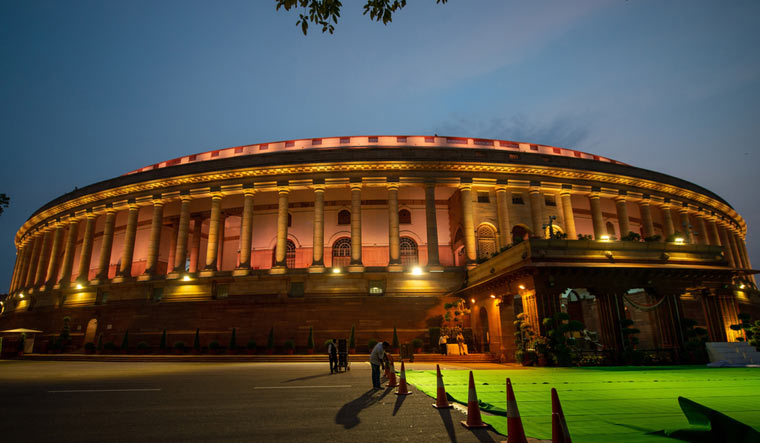The Indian Parliament was relocated to the swanky new complex on September 19 from the colonial-era building built in 1921. The old Parliament building, which was opened on January 19, 1927, will now be known as Sanvidhan Sabha. The historic building of architectural marvel will continue to be remembered as an icon of India’s chequered history and parliamentary polity.
What would be conspicuously missing in the new Parliament building, besides other memorabilia, is the grandeur of the Central Hall, a mute testimony to India’s pulsating democracy, where the country's first Prime Minister Jawaharlal Nehru made his famous ‘Tryst with Destiny’ speech on the eve of transfer of power from the British. Originally designed as the Reading Room of the Library of the Central Legislature, the Central Hall was redesigned in 1946 for the purpose of the Constituent Assembly which met there from December 9, 1946 to January 24, 1950.
The Central Hall has been used to enable President of India to address the members of Parliament, belonging to both Lok Sabha and Rajya Sabha at the commencement of the Lok Sabha after the general elections and also at the beginning of the first session of the year, besides the joint sittings of the two Houses when needed. It is an icon of solemnity and a melting pot of India’s plurality exuding bonhomie and camaraderie in India’s political spectrum.
Who could forget the time when the Central Hall hosted the members belonging varying political persuasion with open arms; where MPs relaxed and unwinded after heated debates in the House, over a cup of filtered coffee from the Coffee Board or steaming hot tea from the Tea Board, or a sandwich or simply a frugal khichdi or dahibhat from the adjacent cafeteria. The Central Hall was a level-playing field and a meeting point of MPs, ministers and even senior journalists.
The Central Hall also hosted world leaders including heads of state and government since 1953. These events carried a lot of symbolic significance and recognition besides enabling the Members of Parliament to listen to world leaders in person. Richard Nixon, then Vice-President of USA, was the first to be accorded this honour way back in 1953. US President Barack Obama was the last foreign dignitary who addressed the members of Parliament in 2010, when he urged India ‘to engage East’. Other American statesman who have been accorded this honour include Dwight D. Eisenhower (1959), Jimmy Carter (1978) and Bill Clinton (2000).
Russian leaders have also earned this privilege in equal numbers starting from Marshal Bulganin in 1955 to Vladimir Putin in 2002. In between, Russian leaders who had the distinction of addressing the members of Parliament include Nikita Khrushchev (1960), Aleksey Kosygin (1979), and Boris Yelstin (1992).
Japanese Prime Minister Shinzo Abe conceptualised his idea of ‘confluence of the seas’, suggesting the seamless connect between the Indian and the Pacific Oceans in the Central Hall while addressing the lawmakers. Even Chinese Premier Zhou Enlai was extended this honour in 1953 during the Panchsheel era.
UK Prime Ministers who addressed the Indian legislators in the Central Hall include Sir Anthony Eden (1955), James Callaghan (1978) and Margaret Thatcher (1981).
Other world leaders who had addressed the Parliament in the Central Hall include Yugoslavia President Josip Broz Tito, (1959), Egyptian Premier Gamel Abdel Nasser (1955), Zambian President Dr Keneth Kaunda (1967) and Pan Van Dong, the Prime Minister of Socialist Republic of Vietnam (1978).
Like the government’s tradition of inviting a chief guest for the Republic Day parade, the practice of inviting the heads of the state or the government to address the Parliament has been an important tool of diplomatic and strategic significance. The government should consider continuing the practice as the Lok Sabha Chamber in the new complex is spacious enough to accommodate both the members of Lok Sabha and Rajya Sabha.
It is understood that the practice of floral tributes to national leaders continue in the Central Hall even after relocation of the Parliament to the new building. The new Parliament building may have its sheen and glitter, but it lacks the grandeur and majesty of old Parliament's Central Hall. The Central Hall should be a continuum of the old and the new.
The writer is a former joint secretary of the Lok Sabha Secretariat and a former senior fellow of Indian Council of Social Science Research.
Opinions expressed in this article are those of the author and do not purport to reflect the opinions or views of THE WEEK.



